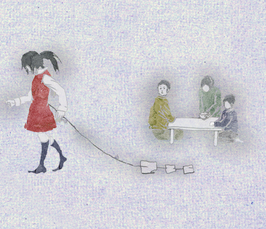Connecting Anatomy and Function: Organization of Amygdala Neural Populations Encoding Emotional Memories
Munich Psychiatry Lecture Series | MPLS
- Date: Oct 11, 2016
- Time: 03:00 PM - 04:00 PM (Local Time Germany)
- Speaker: Anna Beyeler
- The Picower Institute for Learning and Memory, Department of Brain and Cognitive Sciences, Massachusetts Institute of Technology, USA
- Location: Max Planck Institute of Psychiatry
- Room: Lecture Hall
- Host: Julien Dine

The basolateral amygdala (BLA) is known to play a critical role in the formation of associative memories of both positive and negative valence and contains populations of projection neurons, including populations targeting the nucleus accumbens (BLA-NAc), the central nucleus of the amygdala (BLA-CeA) and the ventral hippocampus (BLA-vHPC). However, the topographical organization of these populations, their local connectivity and their naturally-occurring firing patterns during information processing are remained unknown. Through both retrograde and anterograde anatomical tracing, we observed that BLA populations defined by their downstream target (NAc, CeA and vHPC) are topographically organized in the amygdala and have local synaptic interactions. Specifically, we showed that BLA-NAc projectors are denser in the medial BLA, while BLA-CeA projectors are denser in the lateral part of the BLA. The BLA-vHPC are evenly represented in the medial and lateral BLA but are denser in the dorsal amygdala (LA). By combining in vivo recordings during memory retrieval and optogenetic photoidentification, we found that despite heterogeneity in response profiles within each BLA subpopulations, they differentially encode the retrieval of positive or negative associative memories. Specifically, we found that the proportion of BLA-NAc neurons excited during presentation of a reward predictive cue was overrepresented relative to the entire population of BLA neurons. Contrastingly, the relative proportion of BLA-CeA neurons excited during the presentation of an aversive cue was enhanced compared to the entire population of BLA neurons. Finally, BLA-vHPC did not preferentially code for learned associations of positive or negative valence, supporting a model of distinct routing for learned and innate valence-related information. Together, our findings suggest that valence encoding in the BLA is accomplished through the divergent activity of anatomically defined neuronal populations.